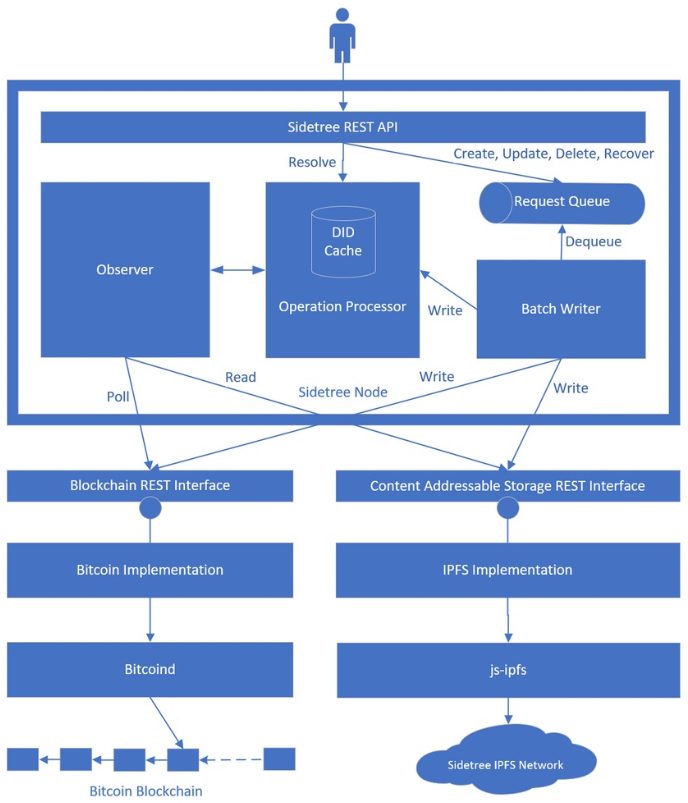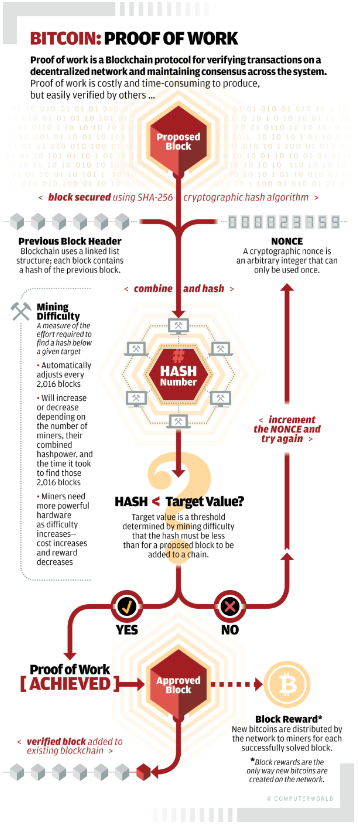In-depth analysis | Why is Microsoft building a bitcoin-based authentication system?
Alex Simons, vice president of project management at Microsoft's identity department, wrote in a blog on Monday: "We believe that everyone needs a decentralized digital identity that they fully own and control, with their own identifiers (self-owned identifiers). As a support, implement secure privacy protection interactions."

After more than a year of development, Microsoft chose Bitcoin as its blockchain platform for its Decentralized Identification system, allowing users to securely access online personal information through an encrypted database center.
The new ID network may mean password exemption, the company can verify the new employee background when the user clicks the virtual button, and approve the login; or the bank customer can verify the loan identity by clicking the button without revealing personally identifiable information.
- Viewpoint | Nothing is cheaper than PoW, Part-1
- The first thing that Facebook cryptocurrency will face is the “near worry” that challenges regulation.
- Wu Jihan turned to the new "continent", is Matrix the next gold mine?
[Related Article: Excel: You will enter the field of data analysis]
Alex Simons, vice president of project management at Microsoft's identity department, wrote in a blog on Monday: "We believe that everyone needs a decentralized digital identity that they fully own and control, with their own identifiers (self-owned identifiers). As a support, implement secure privacy protection interactions ." "This self-owned identity must be seamlessly integrated into life and make people themselves the center of digital currency."
The blockchain-based ID system relies on digital wallets, which serve as a repository for all personal financial data—information can only be shared with specific requests and public key owners. (In a typical Bitcoin network, digital wallets are used to store Bitcoin)
Homan Farahmand, senior research director at Gartner Consulting, said that many suppliers in the DID field are in the early stages of development or are testing pilot projects. Microsoft is the largest of them.
Microsoft's Identity Overlay Network project is an open source Layer 2 network that runs on the bitcoin chain. Microsoft says this approach will greatly increase the throughput of the DID system, "realizing tens of thousands of operations per second." .
One of the inherent problems with Bitcoin is that its trading performance is slow and limited by computer processing and cannot be extended. Each node (computer) obtains a copy of the ledger in near real time, and the consensus mechanism requires the node to verify the authenticity of the block by solving complex mathematical problems.
By using sidetree (Layer 2 Network Protocol), the handler is migrated to the neighboring network, and the backbone is not subject to consensus requirements. On Microsoft's Bitcoin platform, only the hash of the user ID is recorded in the block. On the chain, real identity data is encrypted and stored in a chain ID center that Microsoft cannot access .

( Overview of the ION platform , which uses Bitcoin as the target chain and "sidetree" as the consensus under the Layer 2 network chain)
Bitcoin is not the only project that explores Layer 2 technology and wants to improve performance. Ethernet is one of the most popular blockchain platforms in the world and is also exploring Layer 2 protocols.
Daniel Buchner, project manager for Microsoft Identity Management, said that because ION is based on Bitcoin, it will become an open, license-free network that anyone can use to create DIDs and manage the status of Public Key Infrastructure. Different from the license chain – the license chain is more suitable for commercial use cases – the public chain is not managed by any party, and users in the network verify the new block data through the consensus mechanism.
Buchner explains that unlike currency units and asset tokens, IDs are not used for exchanges and transactions, which allows ION to scale larger without relying on additional Layer 2 consensus schemes, trusted verifier lists, or special Agreement token.
Applying deterministic protocol rules to time-ordered operational batches on the chain, all nodes of the network can reach the same PKI state as the identifier, and the ION node replicates and stores through the IPFS system. The content address system of the system is similar. Internet HTTP location system.

Microsoft's DID network has not yet been activated, and the software giant is still in the "rapid development" phase of the ION code, hoping to test it on a publicly available multi-function blockchain, such as the Bitcoin main network.
"The protocol needs to be improved in many ways to be tested on the Bitcoin main network, enabling tens of thousands of operations per second on low-power consumer reference hardware," Simons wrote. "As we announced earlier, We will share work progress – including defects and all information – in a timely manner – open up conversations with the community and encourage collaboration.)
In the past two years, Microsoft has been exploring how to use blockchain and other distributed ledger technologies to create new types of digital identities, enhancing personal privacy, security levels, and control.
In developing ION, Microsoft has been working with the Decentralized Identity Foundation, a non-profit consortium that includes other technology vendors such as IBM, NEC, RSA, blockchain startups and large Vertical industry companies such as Aetna and WeBank (the first online bank in China).
The release will take several months, and Microsoft hopes that open source developers and "identity community" members will help run the code and document the vulnerability.
“In the next few months, we will work with open source contributors and identity community members to prepare for the public release of the ION network on the Bitcoin main network,” Bushner said. “In the meantime, the project code will be upgraded quickly and is suitable for experience. Rich for developers. If you think you are inexperienced but still want to interact with the ION node, we have deployed an early preview version of ION on Azure."
Source: first class warehouse
We will continue to update Blocking; if you have any questions or suggestions, please contact us!
Was this article helpful?
93 out of 132 found this helpful
Related articles
- Popular Science | Blockchain Security Getting Started Notes (2)
- Russian parliamentary representative: Hold Bitcoin legal, but trade and mine or be fined
- Bitcoin "Trojan Horse": 6 big predictions of Facebook cryptocurrency
- 5G commercial is really coming! Staking 5G project Amino Network called COSMOS
- Blockchain Weekly: The trading platform is strong enough to enter the stable pass, and the market is turned back into the main theme.
- Twitter featured: EOS was downgraded and then exposed to DApp robots
- Bystack Worldview (2): Blockchain Island Rules





